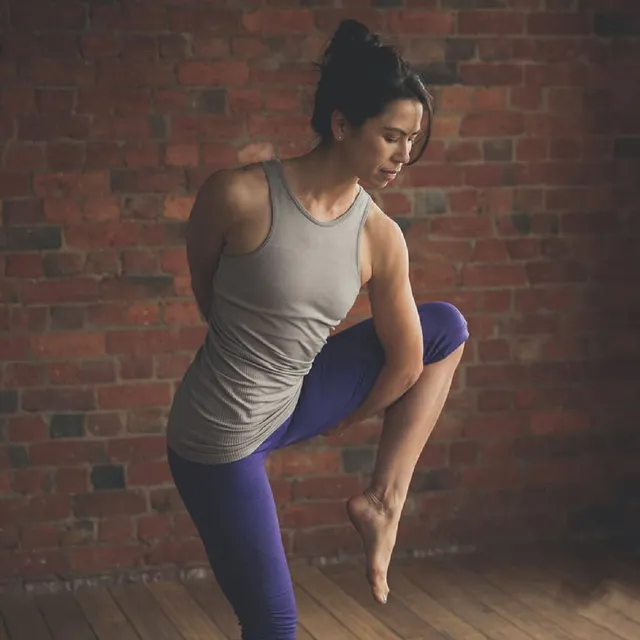
BIRD OF PARADISE
It's an intense but progressive sequence and can be adapted to beginners by adjusting the poses with props and it's okay if they don't go into the final pose!
This balance posture strengthens and relaxes the leg muscles, opens the hips and relaxes the shoulders. It opens the rib cage while straightening the spine, thus promoting breathing amplitude.
In fact, to find balance, the leg resting on the ground must be active and the weight of the body well distributed in the four corners of the foot (ball of the big toe, outside of the heel, ball of the little toe and inside of the heel, internal arch of the foot straightened). The ground leg must be contracted but while remaining flexible at the back of the knee, especially for hyperlaxes, the foot must push the ground back so as not to collapse downwards but to find an upward energy .
This posture is not split but is closer to a very large Utthita Trikonasana, hence its benefits of softening the rear thighs, stretching the psoas of the ground leg and creating opening in the hips . The hamstrings and the flexible psoas make it possible to soften the hips and the groins, to lengthen the lumbar and relieve back pain and also to promote digestion.
The tonicity of the center of the body is fundamental from the entry of the posture until its exit to protect the back, particularly the lumbar area.
The grip of the hands in Chin Mudra is also a precious help to maintain the balance in the posture. Mudra means "seal" in Sanskrit. It is also translated as “sign” or “attitude”. The Chin Mudra represents the unification of the soul. The thumb is the symbol of harmony and awareness. The index finger is the soul of the practitioner and the other three fingers are the three gunas, the quality of energy (Tamas, Rajas, Satva). By closing the circle with the index finger and the thumb, the yogi realizes the union of the human soul with that of the Universe . The Chin Mudra which evokes spiritual consciousness, helps to drive out the negative to make room for yogic consciousness, it is recognized for its benefits on the physical and the mental. This hand gesture amplifies the benefits of the posture by improving the fluidity of the digestive system and by soothing its disorders, it makes it possible to better manage behavioral disorders, to fight against anger and stress and to improve memory.
Access the annotated class sequence with posture images and join the community of teachers!